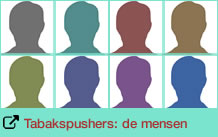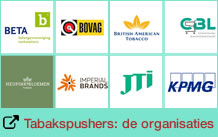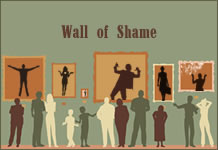How to defeat Big Tobacco with its own weapons
24 July 2025
To counter the arrival of new nicotine products, a coalition of tobacco control organisations in Latin America decided to adopt a surprisingly effective strategy: they use the same tactics as the tobacco industry uses, but this time against the industry itself.
By Eline Goethals
A study published in the Pan American Journal of Public Health analysed the strategies used in 15 Latin American countries between 2017 and 2022 to combat the tobacco industry. The researchers used the Policy Dystopia Model, a system originally developed to categorise harmful strategies of the tobacco industry, to investigate how health organisations use this model in reverse.
The Policy Dystopia Model shows four strategies with which the tobacco industry tries to stop anti-smoking measures: coalition management, information management, direct policy advocacy and legal proceedings. The Latin American study shows how tobacco control organisations have successfully used these four strategies to get effective tobacco control policies in place. Instead of reacting primarily to industry tactics, the organisations anticipated them. Read below how.
Strategy 1: Coalition management
How the tobacco industry is doing it: The industry is building coalitions with other tobacco companies, forming alliances with restaurants, bars and other businesses whose interests can be linked to tobacco sales, and trying to destroy or weaken coalitions of health organisations.
How tobacco control organisations reversed this: Organisations in Latin America built strong networks of local and regional health groups, academics, doctors, lawyers, and international organisations. This coalition received financial and technical support from Bloomberg Philanthropies and the Pan American Health Organisation.
Coordinated activities took place throughout the region. In Jamaica, organisations allowed parents to testify about marketing new tobacco products to young people. In Colombia, Paraguay and Uruguay, coalitions participated in public hearings and media interviews to warn of risks of new products.
Strategy 2: Information Management
How the tobacco industry does it: The industry produces and disseminates information that suits it, questions everything that suits it badly, and uses professional consultants who claim false independence when disseminating industry-controlled information.
How tobacco control organisations reversed this: Organisations took a similar approach to information management, but with accurate information. They focused on four aspects: health risks of new nicotine products, increased access and use among young people, targeted marketing by the industry to young people, and WHO FCTC obligations.
Information was disseminated through traditional methods such as educational leaflets, brochures and press releases. But organisations also used new methods: in Argentina and Brazil, they placed posters in crowded locations with QR codes that redirect to online information about the tobacco industry’s marketing tactics. Bolivia created an index of industrial interference in the political sphere. Costa Rica conducted educational campaigns with informative videos for parents, schools, and policymakers.
The network produced a report in July 2020 with evidence from six countries on how the industry is aggressively trying to sell its products to young people. Organisations partnered with academics and medical professionals to present local evidence on risks of new products.
Strategy 3: Direct policy influencing
How the tobacco industry is doing it: The industry creates direct and often informal access to policymakers, uses formal channels that are part of the regulatory process (e.g. internet consultations) and uses legal threats. Tobacco companies also provide financial support to political parties and candidates.
How tobacco control organisations reversed this: Organisations actively participated in sessions with health ministries to ensure compliance with the WHO FCTC Convention. They educated policymakers about risks of new products through press releases and at meetings to which they were invited.
Organisations sent comments during public consultations, spoke at public hearings, and helped draft legislation for new product regulation. In Colombia, organisations were alert to industry tactics and were able to quickly warn policymakers about conflicting bills.
Strategy 4: Legal proceedings
How the tobacco industry is doing it: Lawsuits delay the regulatory process, which frees up time to counter anti-smoking legislation in other ways. The industry can block regulations and uses legal threats to create a 'regulatory chill'.
How tobacco control organisations reversed this: Organisations use legal procedures strategically to promote tobacco control. They filed a complaint against YouTube Argentina and Mig Vapor LLC for promotion of new tobacco products. In Colombia, a lawsuit was filed to inspect and monitor the marketing of heated tobacco by Philip Morris International.
In Uruguay, organisations presented a nullity claim against a presidential decree that allowed the sale of heated tobacco products. Although this claim was rejected, it showed the willingness of organisations to use legal means for tobacco control.
Argument-based counterstrategies
In addition to these action-based strategies, organisations developed argument-based approaches that systematically debunked industry claims.
Against industry claims of ‘harm reduction’: Organisations argued with evidence that new nicotine products are harmful to health and that long-term effects remain unclear. They pointed to increasing use among young people and stated that new products mainly create new addictions instead of helping to quit smoking.
Against economic arguments: Where the industry emphasizes economic benefits, organisations emphasized WHO FCTC obligations. They argued that governments, as treaty parties, are obliged to pass legislation that complies with the treaty, regardless of economic claims.
Use of the precautionary principle: In Mexico and Uruguay, organisations used the precautionary principle – that precautions should be taken when uncertain about the effects of new products on public health.
Proactive versus reactive approach
The study concludes that these proactive strategies are more effective than reactive approaches. By anticipating industry strategies and using the same tactics, organisations were able to counterbalance before new products were fully introduced to the market.
Transnational collaboration between organisations proved crucial for sharing information on industry tactics and successful regulatory approaches. The network functioned similar to how the industry forms international coalitions.
Modern communication methods
Organisations also applied the modern communication methods of the industry, but for tobacco control. Where the industry uses social media to reach young people with promotion of new products, organisations used the same platforms to educate about risks.
The network conducted needs assessments to address regulatory gaps and used the Global Youth Tobacco Survey to document increases in youth use – similar to how the industry uses market research for product development.
International lessons
The researchers recommend extending the approach to other regions where the use of new tobacco and nicotine products is increasing. Using the Policy Dystopia Model for tobacco control strategies provides insight into how organisations can intercept industry strategies before they are fully implemented.
The research shows that systematic application of industry tobacco control strategies can be more effective than traditional reactive approaches. By using the same weapons as the industry, but for public health instead of profit, tobacco control organisations can be more effective.
tags: Policy Distopia Model | tobacco lobby | prevention | Tobacco Control | tobacco industry | FCTC









 Stichting Rookpreventie Jeugd is geregistreerd als Algemeen Nut Beogende Instelling (RSIN: 820635315 | KvK: 34333760).
Stichting Rookpreventie Jeugd is geregistreerd als Algemeen Nut Beogende Instelling (RSIN: 820635315 | KvK: 34333760).